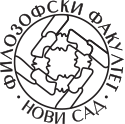HANG-KÉP KAPCSOLATOK BÓDY GÁBOR ÉS JELES ANDRÁS FILMMŰVÉSZETÉBEN
Absztrakt
Az experimentális filmkészítői gyakorlatban a mozgóképi élmény összetettsége éppen a hang és kép klasszikus egységének megbontása révén teremtődik. Bódy Gábor és Jeles András filmjei szembefordulnak a hang és kép komplementaritásának elvével, széthasítva a kettő egységét, elidegenítve egymástól az optikai/vizuális és az akusztikai/verbális dimenziót. Jelen tanulmány a hangsáv és a képi dimenzió viszonyát, alakzatait vizsgálja, ezen belül a természetes és művi hang, az artikulálatlan hang (zörej), a magasan artikulált hang (zene) és a közöttük elhelyezkedő beszéd egymáshoz való viszonyát, a képkeret és hangkeret inkongruenciáit, a narrátori hang és az elbeszélői nézőpont sajátosságait, nem utolsósorban azt, hogy mindezen eljárások milyen jelentésdimenziókat tárnak fel, és milyen befogadói tapasztalatban részesítik a nézőt.
Hivatkozások
Bordwell, David. 1980. The Musical Analogy. Yale French Studies 60 (Cinema/ Sound): 141–156.
Bordwell, David. 1996. Elbeszélés a játékfilmben. Ford. Pócsik Andrea. Budapest: Magyar Filmintézet.
Bordwell, David–Thompson, Kristin. 2008. Film Art: An Introduction. New York: McGraw-Hill.
Branigan, Edward. 2007. Hang, episztemológia, film. Ford. Kocsis Katalin. Apertúra. Filmelméleti és filmtörténeti szakfolyóirat 2 (2): http://apertura.hu/2007/tel/ branigan (2016. jan. 10.)
Chion, Michel. 2011. Vonalak és pontok. Ford. Huszár Linda. Apertúra. Filmelméleti és filmtörténeti szakfolyóirat 7 (1): http://apertura.hu/2011/osz/chion_vonalak_ es_pontok (2016. jan. 15.)
Czirják Pál. 2004. „Sötétség, ragyogás”. Filmszerűség, áttetszőség Jeles András A kis Valentinó című filmjében. Metropolis 4: 8–30. http://www.c6.hu/metropolis/? pid=16&aid=19 (2016. jan. 10.)
Doane, Mary Ann. 1980. The Voice in Cinema: The Articulation of Body and Space. Yale French Studies 60: 33–50.
Doane, Mary Ann. 2006. A film hangja: test és tér artikulációja. Ford. Fürstner Klára és Pataki Katalin. Apertúra. Filmelméleti és filmtörténeti szakfolyóirat 1 (3): http://apertura.hu/2006/tavasz/doane/ (2016. jan. 10.)
Erdély Miklós. 1995. A filmről. Filmelméleti írások, forgatókönyvek, filmtervek, kritikák. Budapest: Balassi Kiadó–BAE Tartóshullám–Intermedia.
Farkas Tamás. 2007. „Farinelli testetlen trillái” – Erdély Miklós és az avantgárd hang. Metropolis 11 (4): 46–64.
Gelencsér Gábor. 2002. A Titanic zenekara: Stílusok és irányzatok a hetvenes évek magyar filmművészetében. Budapest: Osiris.
Gregus Zoltán. 2007. Ki beszél, ki zörög – Hang Jeles filmjeiben. Filmtett november http://www.filmtett.ro/cikk/33/hang-jeles-andras-filmjeiben
Gregus Zoltán. 2009. Az idegenség képei Jeles András filmjeiben. Apertúra. Filmelméleti és filmtörténeti szakfolyóirat 4 (4): http://apertura.hu/2009/nyar/gregus (2016. febr. 15.)
Havasréti József. 2006. Alternatív regiszterek: A kulturális ellenállás formái a magyar neoavantgárdban. Budapest: Typotex.
Hirsch Tibor. 2004. Munkás, hámozva. Álombrigád – az utolsó magyar termelési film. Metropolis 8 (4): 32–41. http://metropolis.org.hu/?pid=16&aid=20 (2016. jan. 15.)
Jeles András. 2006. Teremtés, lidércnyomás: Írások filmről, színházról. Budapest: Kijárat.
Kracauer, Siegfried. 1963. A film elmélete. Ford. Fenyő Imre. Budapest: Magyar Filmtudományi Intézet és Filmarchívum.
Thompson, Kristin. 1980. Early Sound Counterpoint. Yale French Studies 60 (Cinema/Sound): 115–140.
Wierzbicki, James. 2009. Film Music: A History. New York and London: Routledge.








